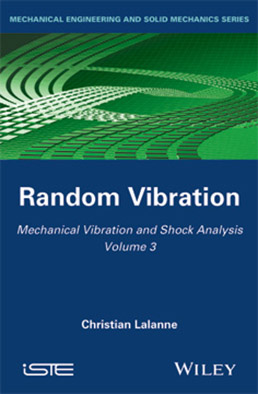
Everything engineers need to know about mechanical vibration and shock...in one authoritative reference work!
This fully updated and revised 3rd edition addresses the entire field of mechanical vibration and shock as one of the most important types of load and stress applied to structures, machines and components in the real world. Examples include everything from the regular and predictable loads applied to turbines, motors or helicopters by the spinning of their constituent parts to the ability of buildings to withstand damage from wind loads or explosions, and the need for cars to maintain structural integrity in the event of a crash. There are detailed examinations of underlying theory, models developed for specific applications, performance of materials under test conditions and in real-world settings, and case studies and discussions of how the relationships between these affect design for actual products.
Invaluable to engineers specializing in mechanical, aeronautical, civil, electrical and transportation engineering, this reference work, in five volumes is a crucial resource for the solution of shock and vibration problems.
The vast majority of vibrations encountered in a real-world environment are random in nature. Such vibrations are intrinsically complicated, but this volume describes the process enabling the simplification of the analysis required, and the analysis of the signal in the frequency domain. Power spectrum density is also defined, with the requisite precautions to be taken in its calculation together with the processes (windowing, overlapping) necessary for improved results.A further complementary method, the analysis of statistical properties of the time signal, is described. This enables the distribution law of the maxima of a random Gaussian signal to be determined, and simplifies the calculation of fatigue damage to be made by avoiding the direct counting of peaks.
1. Statistical Properties of a Random Process.
2. Random Vibration Properties in the Frequency Domain.
3. RMS Value of Random Vibration.
4. Practical Calculation of Power Spectral Density.
5. Statistical Properties of Random Vibration in the Time Domain.
6. Probability Distribution of Maxima of Random Vibration.
7. Statistics of Extreme Values.
8. Response of a One-degree-of-freedom Linear System to Random Vibration.
9. Characteristics of the Response of a One-degree-of-freedom Linear System to Random Vibration.
10. First Passage at a Given Level of Response of a One-degree-of-freedom Linear System to a Random Vibration.
Christian Lalanne is a Consultant Engineer who previously worked as an expert at the French Atomic Energy Authority and who has specialized in the study of vibration and shock for more than 40 years. He has been associated with the new methods of drafting testing specifications and associated informatic tools.